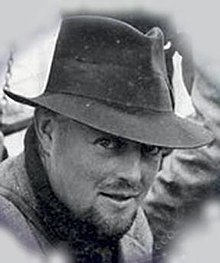T. C. Lethbridge | |
|---|---|
 | |
| Born | 23 March 1901 |
| Died | 30 September 1971 (aged 70) |
| Nationality | English |
| Other names | T. C. Lethbridge |
| Citizenship | United Kingdom |
| Education | Wellington College, Cambridge University |
| Occupation(s) | Explorer, archeologist, and parapsychologist |
| Employer | University of Cambridge |
| Known for | The Power of the Pendulum |
Thomas Charles Lethbridge (23 March 1901 – 30 September 1971), better known as T. C. Lethbridge, was an English archaeologist, parapsychologist, and explorer. A specialist in Anglo-Saxon archaeology, he was honorary Keeper of Anglo-Saxon Antiquities at the Cambridge University Museum of Archaeology and Ethnology from 1923 to 1957, and wrote twenty-four books on various subjects, becoming known for his advocacy of dowsing.
Born in Somerset to a wealthy family, Lethbridge was educated at Trinity College, Cambridge, during the course of which he attended an expedition to Jan Mayen island, becoming part of the first group to successfully climb the Beerenberg. After a failed second expedition to the Arctic Circle, he became involved in archaeology. In his capacity as Keeper of Anglo-Saxon Antiquities at the Cambridge University Museum of Archaeology and Ethnology, Lethbridge carried out excavations at sites around Britain. His claims regarding the existence of Iron Age hill figures on Wandlebury Hill in Cambridgeshire caused controversy within the archaeological community, with most archaeologists concluding that he had misidentified a natural feature. Lethbridge's methodology and theories were widely deemed unorthodox, and in turn he became increasingly critical of the archaeological profession.
After resigning from the museum in 1957, Lethbridge devoted himself to researching paranormal phenomena, publishing a string of books on the subject for a popular rather than academic audience. Several books involved his research into the use of pendulums for dowsing, although in other publications he championed the witch-cult hypothesis of Margaret Murray, articulated the Stone Tape theory as an explanation for ghost sightings, and argued that extraterrestrial species were involved in shaping human evolution; in this he came to embrace and perpetuate the esoteric ideas of the Earth mysteries movement. Although his work in parapsychology was derided and ignored as pseudo-scientific by the academic establishment, he attracted a cult following, and his work was posthumously championed by esotericists including Colin Wilson and Julian Cope. In 2011 he was the subject of a biography by Terry Welbourn.